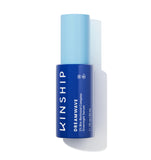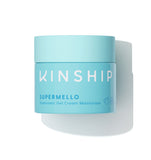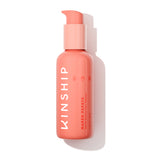A face serum delivers active ingredients deep into the skin, while a moisturizer helps seal everything in.
To get the most benefits from both products, it is often best to apply serums first before moisturizers.
However, the answer to the moisturizer vs. serum dilemma may not be as cut and dry as we would like, as the order will also depend on the specific products and individual skin types involved.
Confused? No need to worry—this guide will break it down for you!
Let us learn each product’s differences and uncover some application tips for a truly glowing complexion.
Recommended Products
What Is a Serum?
A face serum is a lightweight, fast-absorbing beauty product formulated with a high concentration of active skincare ingredients.
These ingredients target specific skin concerns such as wrinkles, dark spots, uneven skin tone, and hydration.
Here are some common active ingredients found in serums:
- Hyaluronic acid: Known for its intense hydrating properties.
- Vitamin C: Brightens the skin and reduces hyperpigmentation.
- Retinol: Promotes cell turnover and combats signs of aging.
- Niacinamide: Minimizes pores and regulates oil production.
- Salicylic acid: Exfoliates the skin and fights acne.

What Is a Moisturizer?
A moisturizer is another skincare product designed to hydrate the skin and prevent moisture loss.
It forms a protective barrier on the skin's surface, helping to lock in hydration and keep it plump and supple.
Here are some of the different types of moisturizers suitable for various skin types:
- Creams: Thick and rich, ideal for dry to very dry skin
- Lotions: Lighter than creams, good for normal or combination skin
- Gels: Oil-free and lightweight, perfect for oily or acne-prone skin

Serum vs. Moisturizer: Key Differences
While both serums and moisturizers play essential roles in a healthy skincare routine, they differ significantly in their formulation, function, penetration, and active ingredients.
Let us go through these differences in detail.
Formulation
Serums have a thinner consistency due to their smaller molecules. These smaller molecules can penetrate deeper into the skin's layers to deliver concentrated active ingredients.
Conversely, moisturizers have larger molecules that form a protective barrier on the skin's surface.
Function
Serums are designed to target specific skin concerns. Their high concentration of active ingredients allows them to address issues like wrinkles, hyperpigmentation, or acne.
Moisturizers, on the other hand, provide overall hydration and protection. They help maintain the skin's moisture balance and prevent dryness.
Penetration
Thanks to their lightweight, fast-absorbing formulas, serums penetrate deeper into the skin. This deep penetration means active ingredients can work more effectively at a cellular level.
In contrast, moisturizers work primarily on the skin's surface. They form a barrier that locks in moisture and protects the skin from external aggressors.
Active Ingredients
Serums typically contain higher concentrations of active ingredients like hyaluronic acid, vitamin C, and retinol.
These ingredients are specifically chosen to address targeted skin issues.
While moisturizers may contain beneficial ingredients like ceramides, glycerin, and peptides, their primary focus is more on hydrating and protecting the skin.
Their formulas are designed to maintain overall skin health rather than targeting specific concerns.
Which Should Come First?
As a general rule in skincare, it is best to apply products from thinnest to thickest consistency. This allows the thinner, more concentrated ingredients in serums to penetrate the skin first.
Therefore, serums should be applied first, followed by a moisturizer to seal it in.
Here is the science behind it:
- Serums Go Deep: When you apply serum first, the smaller molecules have a clear path to reach the deeper layers of the skin, where they can work their magic.
- Moisturizer Locks In: Following with a moisturizer creates a protective barrier that traps the serum's active ingredients within the skin, maximizing their effectiveness.
While the thin-to-thick rule generally applies, below are some exceptions.
- Oil-based Serums: Oil forms a barrier that can block water-based products if applied first. So, if you are using an oil-based serum, it might be better to apply it after a water-based moisturizer.
- Prescription Medications: Always follow the application instructions provided by your doctor for any prescription medications you use in your skincare routine.
How to Apply Serum and Moisturizer Correctly

Here is a simple step-by-step guide, complete with our recommended products, to ensure you get the most out of your serum and moisturizer.
1. Cleanse
Start by cleaning your skin with a gentle cleanser suited to your skin type. This will remove dirt, oil, and impurities, preparing your skin for subsequent products.
Recommended product:
Naked Papaya Gentle Enzyme Face Cleanser - this gentle cleanser is designed to remove dirt, oil, and impurities from your skin while deep cleaning pores.

2. Tone
Use a toner to help restore your skin's pH balance and further remove any residual impurities left after cleansing. Toners can also add a further layer of protection.
Recommended product:
Self Smooth 10% Glycolic Pore Minimizing Toner-Serum: This award-winning formula exfoliates, soothes, and strengthens the skin barrier using Kinbiome™ pre-probiotic technology for a clear and healthy complexion.

3. Apply Serum
This step involves using targeted formulas—like serums—to address specific skin issues, such as wrinkles, blemishes, or uneven texture.
Simply dispense a few drops of serum onto your fingertips. Gently pat the serum onto the face and neck, avoiding the eye area.
NOTE: Allow the serum to absorb for about 30 seconds to a minute before applying moisturizer.
Recommended product:
Brightwave Face Serum 10% Vitamin C + Peptide Brightening Serum: This award-winning serum combines 10% Vitamin C and collagen peptides to brighten, fade dark spots, and reduce fine lines and wrinkles. Clinically formulated, it shows visible results in as little as 14 days.
4. Moisturize
Keeping your skin hydrated is essential regardless of your skin type. Choose a moisturizer that fits your skin's needs—lighter for oily skin and richer for dry skin.
Then, apply a dime-sized amount of moisturizer to your face and neck, using gentle upward motions.
Recommended product:
Supermello Hyaluronic Gel Cream Moisturizer: This lightweight gel-cream uses hyaluronic acid for deep moisture and plant-based ingredients to soothe sensitive skin, reduce redness, and strengthen the skin barrier.
Its effectiveness has even earned it the National Eczema Association Seal of Acceptance™.
5. Additional Tips
Daytime: Finish your skincare routine with sunscreen (SPF 30 or higher) to protect your skin from sun damage.
Nighttime: Night creams are formulated to help your skin repair and rejuvenate while you sleep. Consider adding a night cream, which may be richer and more hydrating than your daytime moisturizer.

Frequently Asked Questions (FAQs)
Here are answers to some questions you might have about applying Face Moisturizer vs. Face Serum.
Can I Use Serum and Moisturizer Together?
Yes, you can and should use both for optimal skin benefits. Apply the serum first to target specific concerns, then use the moisturizer to lock in hydration and protect the skin.
Do I Need Both Serum and Moisturizer?
If you have minimal skin concerns and your skin feels comfortable without additional products, you do not necessarily need a serum.
However, incorporating a serum into your routine can be very beneficial if you want to target specific issues, such as wrinkles, dark spots, or uneven texture.
Moisturizer, meanwhile, is a must-have for everyone—it keeps your skin hydrated and protected.
What Happens If You Use Moisturizer Before Serum?
Oil and water do not blend, so it matters which order you use your products.
Applying moisturizer first can create a barrier that prevents the serum from penetrating effectively. This reduces the serum's benefits, as it cannot reach the deeper layers of the skin.
Key Takeaways on Serum or Moisturizer First
Tailor your skincare routine to your specific needs and consider the order of product application as a crucial step in achieving healthy, radiant skin.
Always follow the general rule when applying products: thinner products go first, so serums come before moisturizers.
Why?
- Serums are lightweight and contain smaller molecules. They penetrate deeper into the skin, delivering concentrated active ingredients like vitamins and antioxidants.
- Moisturizers are thicker. They form a protective barrier on the surface, locking in hydration and keeping out environmental aggressors.
Applying serum before moisturizer ensures that the active ingredients in the serum penetrate deeply into the skin, while the moisturizer seals everything in and provides hydration.
Searching for the right products to make this combination happen? Explore Kinship's vegan skincare to keep your skin feeling healthy.



